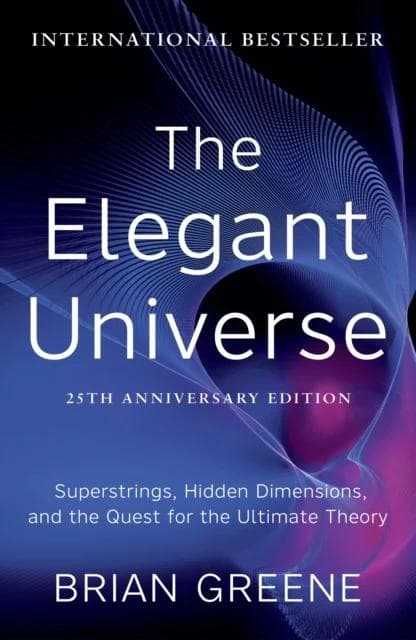
The Elegant Universe:
Superstrings, Hidden Dimensions, and the Quest for the Ultimate Theory
'Compulsively readable... Greene threatens to do for string theory what Stephen Hawking did for holes' - New York Times
DIFFICULTY
intermediate
PAGES
512
READ TIME
≈ 720 mins
DIFFICULTY
intermediate
PAGES
512
READ TIME
≈ 720 mins
About The Elegant Universe
The Elegant Universe opens with physics’ central clash—Einstein’s smooth gravity versus quantum jitters—and argues it may resolve if nature’s basic ingredients are tiny vibrating strings in hidden dimensions.
Brian Greene is a calm guide, unpacking superstrings, M-theory and branes, and showing how curled-up Calabi–Yau shapes could let gravity and the other forces emerge from geometry. He teases out symmetry, supersymmetry and surprising dualities that recast different equations as facets of one underlying structure, using everyday analogies to keep the maths human.
Greene is candid about evidence: tests are scarce, predictions delicate, controversy real. Yet the payoff is vivid: space and time become dynamic, quantum threads; unification stops being a slogan and starts to feel thinkable.
If you’re curious where fundamental physics is heading—and why that shapes our picture of reality—this book is a clear invitation to the frontier.
What You'll Learn
- The core ideas of relativity and quantum mechanics
- How string theory seeks to unify all forces and particles
- Visualize extra spatial dimensions and compactification (Calabi–Yau structures)
- The roles of symmetry, supersymmetry, dualities, and branes
- The experimental challenges of testing quantum gravity
- How mathematical elegance guides theory-building in physics
Key Takeaways
- Strings replace point particles
- Extra dimensions enable unification
- Relativity meets quantum mechanics
- Dualities and branes reshape physics
- Empirical tests remain challenging

